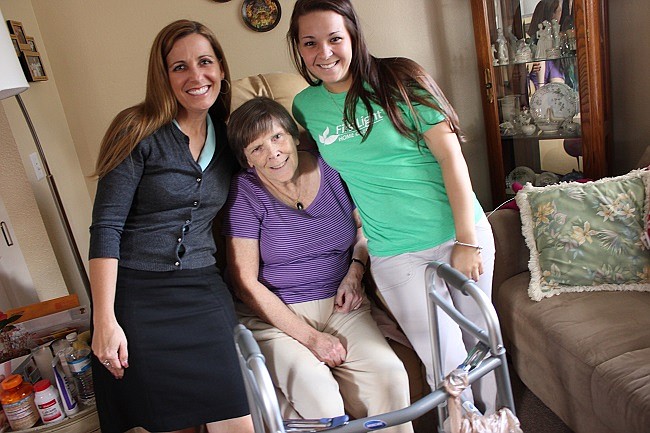- December 19, 2025
-
-
Loading

Loading

In 2012, there were 43.1 million people – 13.7 percent of the population – who were 65 or older in the United States, according to the U.S. Census Bureau. By 2050, the Congressional Budget Office projects that this age group will rise to one-fifth of the total U.S. population. As this age group grows, an increased number of senior citizens are looking for care options, and many are turning away from institutionalized settings and embracing care options available in their own homes.
“I think home care’s the best-kept secret because unless you’ve had it, you don’t really know what it is,” said Craig Moore, executive director of Florida Hospital Home Care Services. “It’s always a surprise to patients or family members when they hear, ‘I can get this in my home.’”
When asked by The New York Times in 2012, 80 to 90 percent of older people said they wanted to remain in their homes, avoiding institutionalization for as long as possible. The 2010 Census found that 3.1 percent of the older population resided in skilled nursing facilities, down from 4.5 percent in 2000. For seniors wishing to hold on to their independence, home care may be the best option.
“We’re really in your home, immersed in your environment and helping you to understand, you know, what you can do to live healthy and well and recover,” Moore said. “We do a lot of education to help you get better. But the goal is to make you independent in your own environment and help you get back to a level of independence in your community as well.”
“I think as people are living well and longer… there’s an increase in that need,” he said.
Life expectancy is steadily growing, reaching a new high of 78.8 years for the U.S. population in 2012, up 0.1 percent from the year before, according to the Centers for Disease Control and Prevention.
Moore also mentioned the benefits home care offers to the “sandwich generation” of adults who are providing care to their own children, as well as to their parents. A 2013 survey by the Pew Research Center found that 47 percent of adults in their 40s and 50s fit this category. Home care can help reduce the workload on these adult children who are helping their aging parents, Moore said.
Personal emergency responders and automated medication dispensing machines are a few services offered by FHHCS that help seniors live independently while also assuring their loved ones of their safety, Moore said. The medication dispensers are prefilled by a nurse and locked so patients can’t overmedicate. If a patient misses a dose, the device is hooked up to a phone line, which alerts FHHCS, allowing them to call and check in.
“For some patients, that [service] has meant they’re able to live alone for a little bit longer,” Moore said.
Home care is about more than independence for some. For the 5.1 million Americans aged 60 and older who had Alzheimer’s disease in 2015, according to the Alzheimer’s Association, a change of setting can lead to catastrophe.
“It keeps them in the comforts of their homes, which is huge, especially for someone with Alzheimer’s or dementia,” said Britney Winston, community relations director for Senior Helpers.
Keeping patients in their homes can ease the distress caused by unfamiliar settings, she said. Senior Helpers has a network of franchises across around the world, including the office servicing Central Florida. It offers specialized services for patients affected by memory loss.
A 2004 MetLife market survey of nursing home and home care costs found the average daily rate for a private room in a skilled nursing facility was $192 or $70,080 annually. In comparison, the hourly rate for a home health aide was $18.12.
In addition, the Census Bureau reported in 2014 that from 2005 to 2011, the cost of nursing home care and assisted living facilities rose by 4.4 percent annually, compared with 1.4 percent for home health aides.
“From a federal savings perspective, because we always hear congressmen and women talking about the Medicare program itself, it is a very low-cost way of providing really good care for patients,” Moore said.
Florida Hospital Home Care is a nonprofit founded in 1985, servicing about 600 patients on a daily basis throughout Orange, Seminole and Osceola counties, Moore said. The goal is really to extend Florida Hospital’s services into the community, he added.
“Home care allows our system to have relationships with patients that don’t just happen within an episode of care,” Moore said. “We’re really creating a relationship with our community and our patients that’s ongoing, that’s continuous. It’s not just when they’re ill.”
“Some want us to continue going on even after, you know, there’s no longer a need for us to be there,” he said with a laugh.
*A previous version of this story misnamed the organization Brittany Winston works for. She is the community relations director for Senior Helpers, not Home Instead Senior Care.